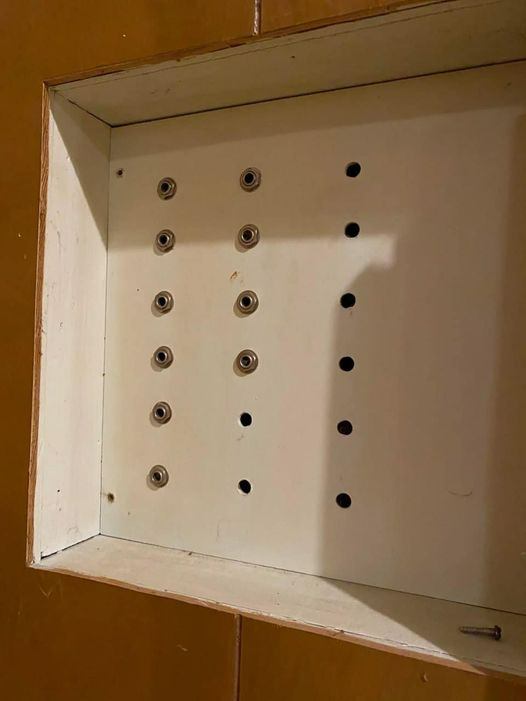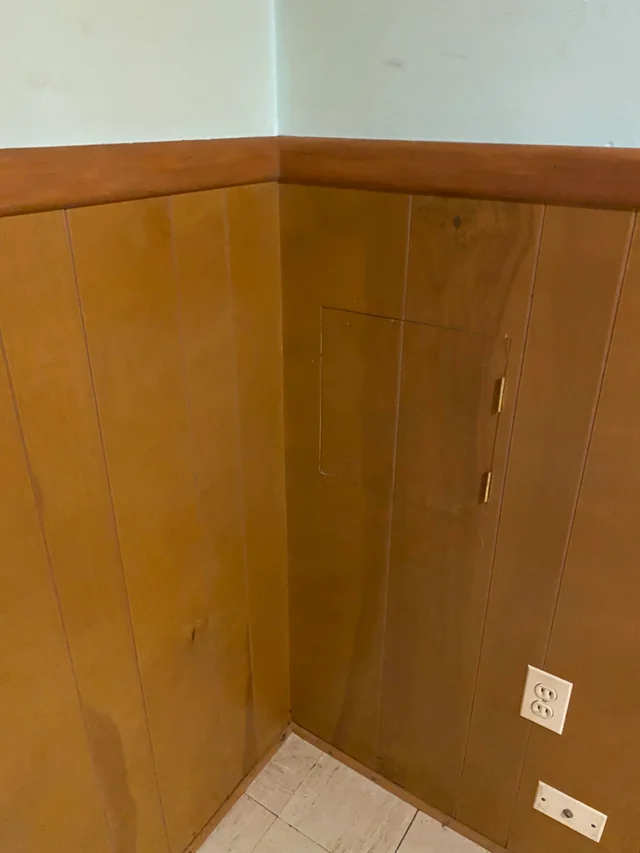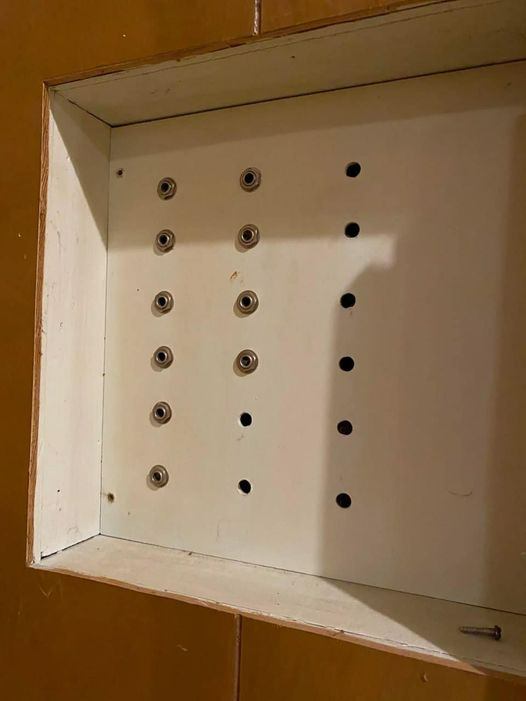Imagine the thrill of embarking on a home renovation only to uncover a piece of history! That’s exactly what happened to a lucky homeowner recently. While exploring a charming 1955-built house, they stumbled upon a hidden door leading to an unusual panel filled with mysterious plugs. The discovery left everyone scratching their heads, wondering what these connectors were used for.


This fascinating find brings to light the often-overlooked intricacies of mid-20th-century homes. Let’s dive into the potential purposes of these enigmatic plugs.
The Hidden Door
The journey started with a routine renovation. While investigating the basement, the homeowner noticed a curiously placed wooden panel. This led to a hidden door behind a false wall. Opening this door felt like unlocking a time capsule, revealing a panel with numerous plugs and outlets. It felt like stepping back into the 1950s.
The Panel and Its Plugs
The panel appeared to be a well-maintained artifact from the mid-20th century. The array of plugs and connectors suggested sophisticated and specific uses, but identifying their exact function wasn’t straightforward. To make sense of it, one has to consider the technological landscape of the 1950s.
Possible Explanations
Let’s explore some potential explanations for this intriguing panel:
Early Home Automation System: In the 1950s, home automation was just beginning. Wealthier homeowners might have installed centralized control systems to manage lights, climate, and even security. This panel could have been an early attempt at such integration, providing centralized control for various home functions.
Intercom and Communication Network: Larger homes from the mid-20th century often featured intercom systems for easy communication between rooms. The panel might have been part of such a system, allowing the family to communicate between the kitchen, bedrooms, and garage.
Audio-Visual Equipment: The 1950s saw a surge in home entertainment systems, including radios, record players, and early televisions. This panel might have been used to manage and connect these devices, distributing audiovisual content throughout the house.
Security System: As suburban living flourished post-World War II, so did the interest in home security. The panel could have been part of an early alarm or surveillance system designed to protect the home from intruders.
Electrical Circuit Management: With the increase in electrical appliances, homes of that era needed better ways to manage power distribution. This panel might have been an advanced form of electrical circuit management, helping distribute power efficiently throughout the home.
Historical Context
Understanding the panel requires a look at the historical context. The 1950s were marked by rapid technological progress. Homeowners were eager to embrace new technologies that promised convenience and security. This panel, with its array of plugs, represents that era’s innovative spirit.
Conclusion
Uncovering this hidden panel in a 1955 home offers a fascinating glimpse into the past. While we may not definitively know the purpose of these plugs, the possibilities showcase the ingenuity of mid-20th-century home design. Whether for early home automation, communication, entertainment, security, or electrical management, this panel is a testament to a forward-thinking era.
As the homeowner continues to explore and perhaps restore this intriguing find, one thing is certain: the secrets of the past continue to captivate and inspire. They remind us of the rich history that surrounds us in our everyday lives.




